The Charité Hospital History Walking Tour offers an insightful glimpse into Berlin’s medical past, starting from Robert-Koch-Platz and weaving through historical narratives that shaped healthcare. Visitors explore the hospital’s evolution from a plague house to a beacon of medical innovation, highlighting the contributions of influential figures like Rahel Hirsch. With stunning neo-gothic architecture as a backdrop, the tour not only emphasizes the hospital’s historical significance but also invites participants to reflect on the broader political context. As they stroll toward Alexanderufer, they may wonder what other hidden stories the city has to share.
Key Points
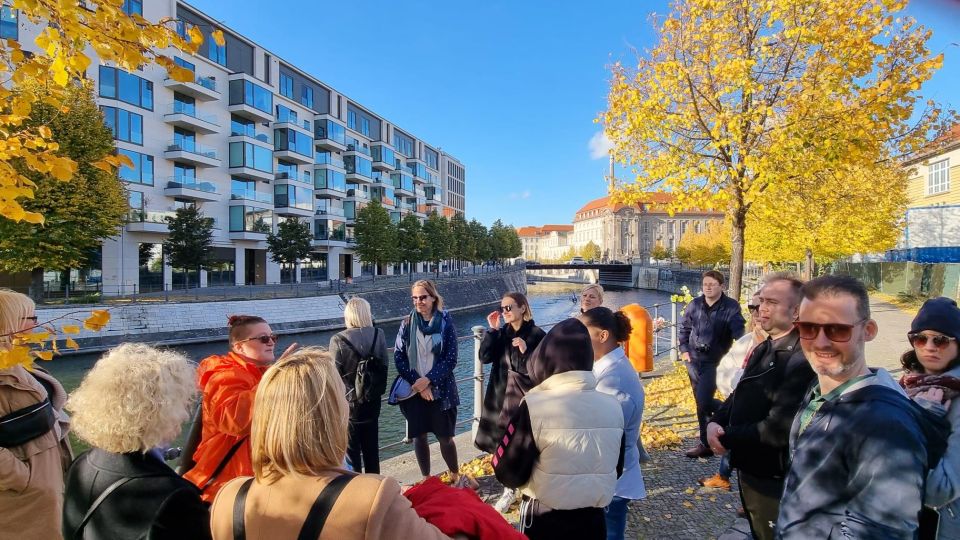
- The walking tour lasts 2 hours, including a 75-minute guided exploration of Charité’s history and medical advancements.
- It begins at Robert-Koch-Platz and ends at Alexanderufer, near Central Station.
- The tour highlights significant figures, including Robert Koch and Rahel Hirsch, emphasizing their contributions to medicine.
- The architectural features of Charité showcase neo-gothic design with red-brick facades and beautifully landscaped gardens.
- The tour is wheelchair accessible, available in English and German, and starts at €20.00 per person.
It's also worth checking out some other tours and experiences nearby.
Overview of the Tour
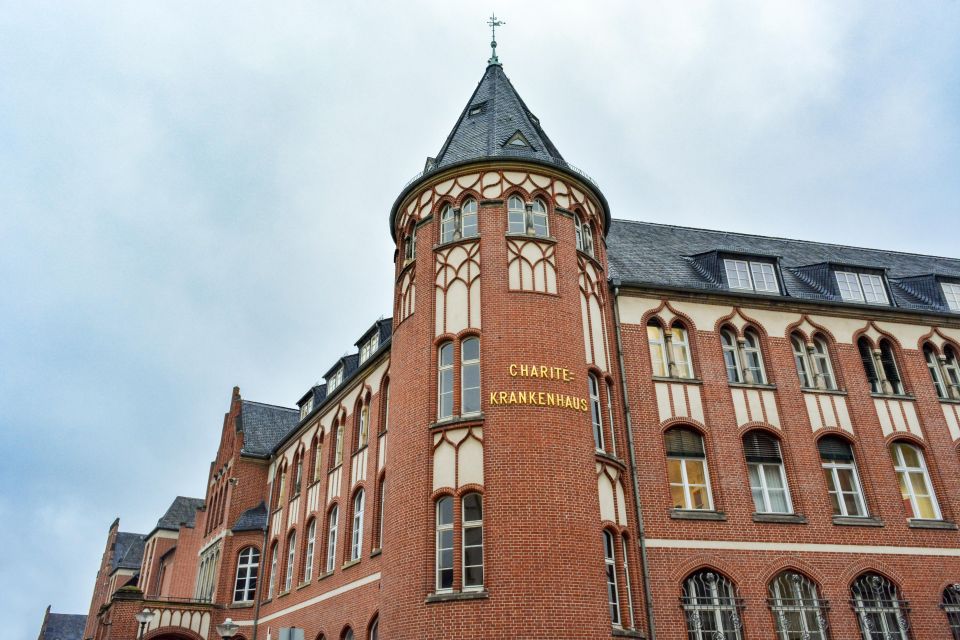
The Berlin Charité Hospital History Walking Tour offers an enlightening glimpse into the legacy of one of the world’s oldest medical institutions.
Spanning two hours, this engaging tour starts at Robert-Koch-Platz, near the famous statue, and features a 75-minute guided exploration of the hospital’s rich history.
Visitors discover significant medical advancements and the pivotal roles women played in medicine, highlighted by Rahel Hirsch, Charité’s first female professor.
The tour concludes at Alexanderufer, close to Central Station.
Priced from €20.00 per person, it accommodates both English and German speakers and is wheelchair accessible.
With a flexible cancellation policy and high customer ratings, it promises a rewarding experience for history enthusiasts and medical professionals alike.
Historical Significance of Charité
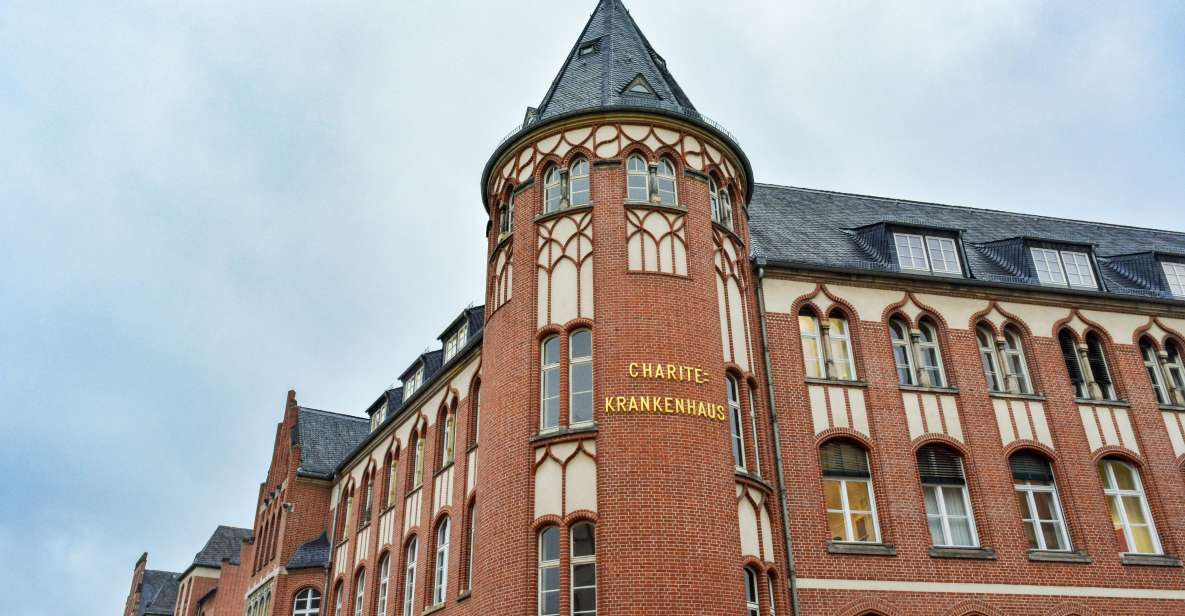
Established in 1710, Charité stands as Berlin’s oldest hospital and a pivotal institution in the evolution of modern medicine. Originally founded as a plague house, it transformed into a center for medical innovation and education.
Charité is renowned for its association with Nobel Prize-winning microbiologist Robert Koch, who made groundbreaking discoveries in the fight against tuberculosis.
Throughout its history, the hospital has played a crucial role in shaping medical practices and ethics, navigating complex political landscapes during the Nazi and East German regimes.
Despite these challenges, Charité has remained a beacon of medical advancement, highlighting the contributions of pioneering figures, including Rahel Hirsch, the first female professor, thereby enriching the narrative of healthcare in Berlin and beyond.
Architectural Features
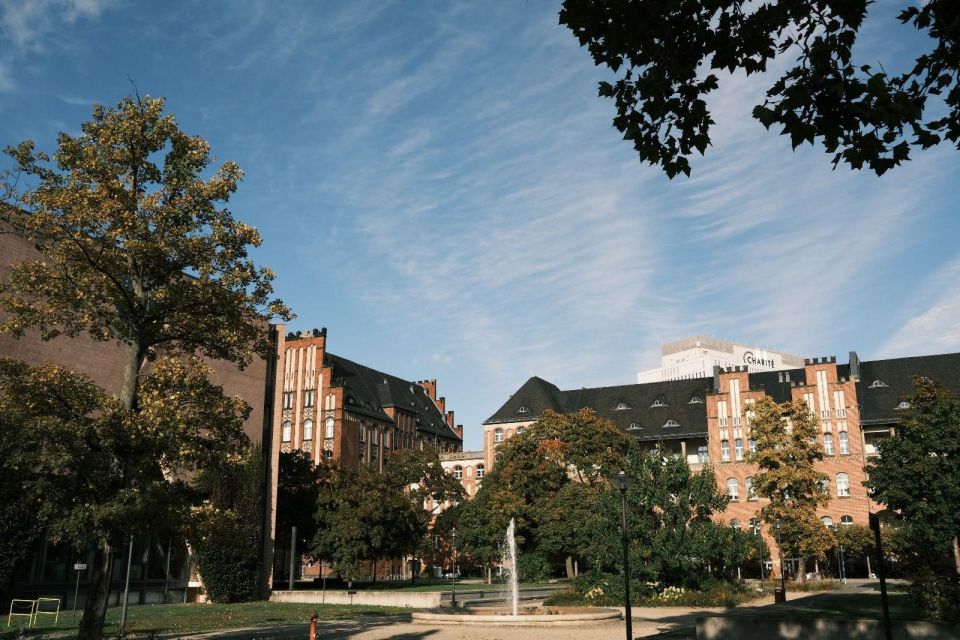
Charité’s architectural design captivates visitors with its stunning neo-gothic style, characterized by intricate red-brick facades and elegant arches.
The buildings display a harmonious blend of functionality and artistry, featuring detailed stonework and soaring spires that evoke a sense of history and grandeur.
Inside, the expansive hallways and high ceilings create an inviting atmosphere, while large windows bathe the spaces in natural light.
The campus layout encourages exploration, guiding guests through beautifully landscaped gardens that offer a serene contrast to the bustling city.
Unique architectural elements, such as decorative ironwork and ornate doorways, showcase the craftsmanship of the era.
Key Historical Figures
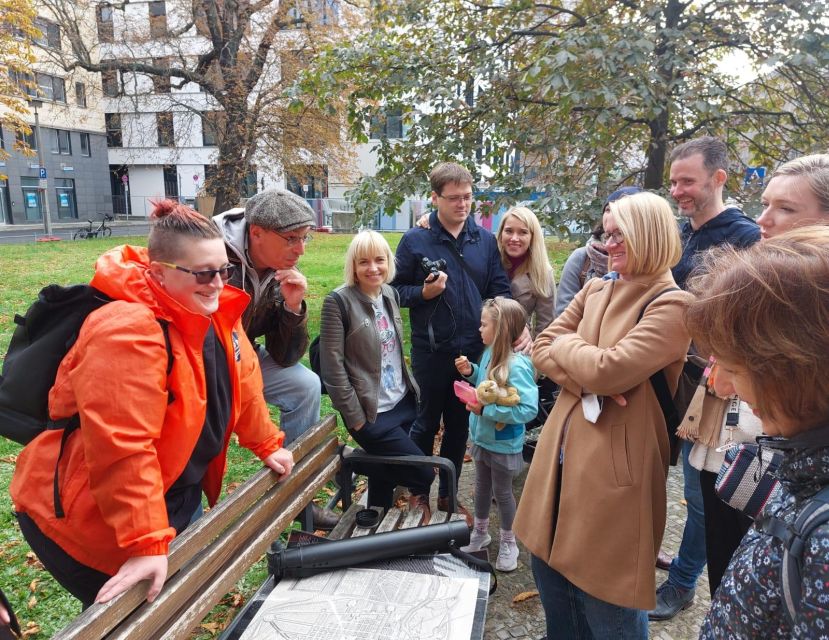
Highlighting notable contributions to medicine, Charité Hospital is closely associated with several key historical figures who shaped its legacy. Among them, Robert Koch stands out for his groundbreaking work in microbiology, particularly his discovery of the tuberculosis bacterium. Rahel Hirsch also played a crucial role as the first female professor at Charité, paving the way for women in medicine.
| Name | Contribution | Year Active |
|---|---|---|
| Robert Koch | Discovered tuberculosis | 1882 |
| Rahel Hirsch | First female professor at Charité | Early 20th Century |
| Emil von Behring | Developed diphtheria serum | 1890 |
| Hermann von Helmholtz | Pioneered physiological optics | 19th Century |
These figures significantly influenced medical practices and education at Charité and beyond.
Political Context and Impact
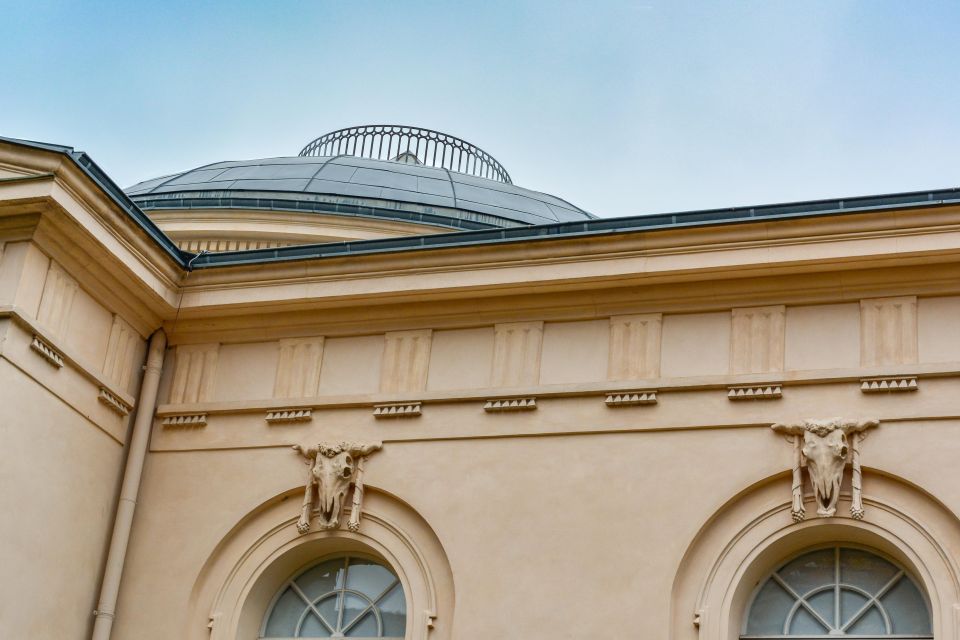
The political landscape in which Charité Hospital operated has profoundly shaped its history and legacy. Throughout its existence, shifting regimes impacted the hospital’s practices and ideologies, intertwining healthcare with political agendas.
-
Under the Nazi regime, medical ethics were severely compromised, leading to the tragic extermination of psychiatric patients.
-
The hospital served the East German government as a symbol of medical progress while isolating it from Western influence.
-
Charité became a focal point for advancements in medicine, reflecting the broader societal struggles and triumphs of its time.
These elements illustrate how Charité’s role in healthcare wasn’t merely clinical; it was also a reflection of the complex political narratives that shaped Berlin’s history.
Itinerary of the Walking Tour
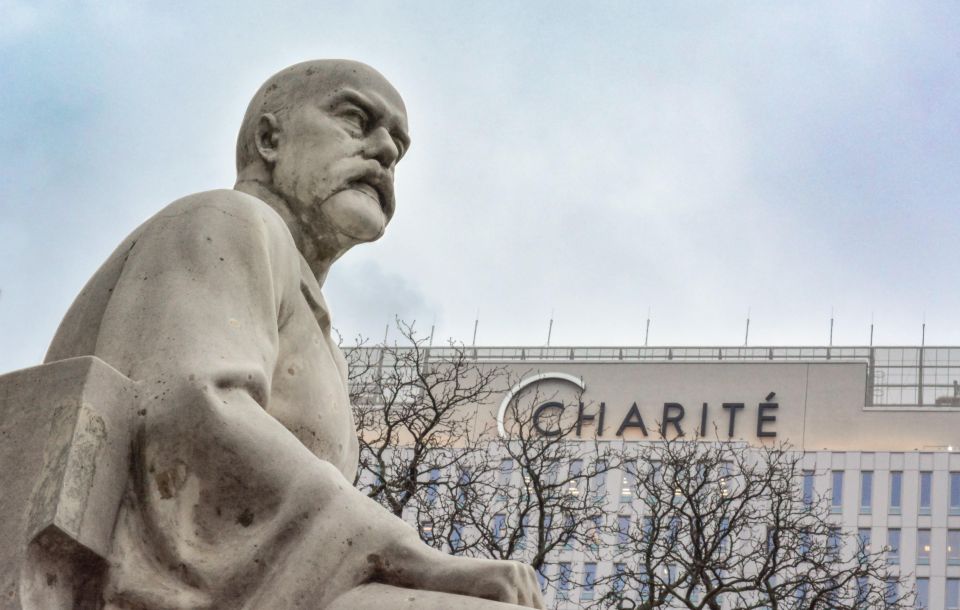
Starting at Robert-Koch-Platz, participants embark on a captivating 75-minute guided tour that delves into the rich history of Charité Hospital.
The journey begins near the iconic Robert Koch statue, where an experienced guide introduces the hospital’s origins as a plague house in 1710.
As the group strolls through the beautiful neo-gothic campus, they’ll learn about significant medical advancements and pivotal figures, including Nobel Prize-winning microbiologist Robert Koch.
The tour highlights the contributions of women in medicine, particularly Rahel Hirsch, the first female professor at Charité.
Concluding at Alexanderufer, near Central Station, the itinerary also includes a brief 15-minute visit to the Veterinary Anatomy Theater, providing a well-rounded historical experience.
Visitor Experience and Ratings
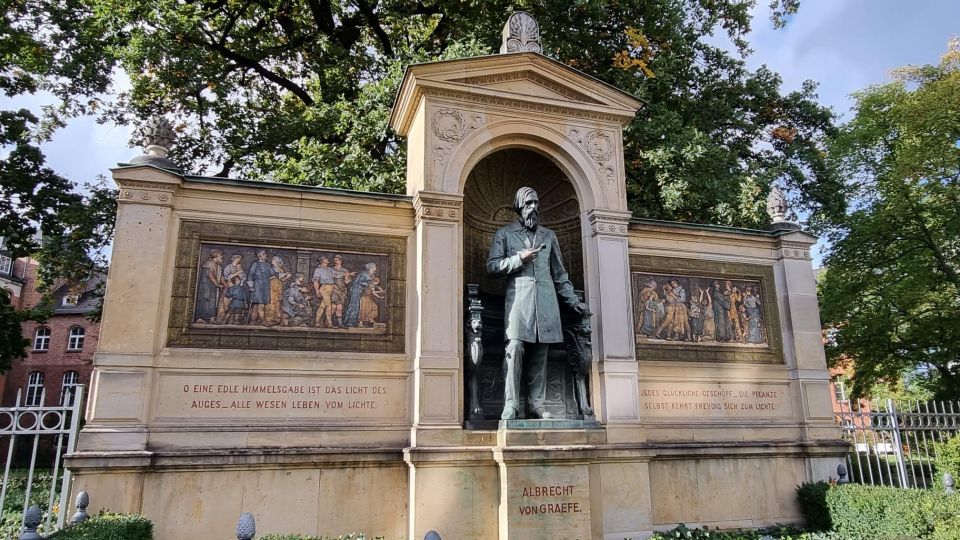
Visitors on the Charité Hospital History Walking Tour consistently rave about their experience, reflected in an impressive overall rating of 4.8 out of 5 based on 83 reviews.
Participants appreciate the depth of knowledge shared by the guides, who bring history to life through engaging storytelling.
Highlights of their feedback include:
-
Knowledgeable Guides: Tour leaders are praised for their expertise and passion.
-
Engaging Storytelling: The narrative captivates visitors, making history accessible and interesting.
-
Comprehensive Insights: Attendees value the thorough exploration of Charité’s rich medical history and architecture.
This positive reception underscores the tour’s appeal, making it a must-try for history enthusiasts and curious travelers alike.
Practical Information for Participants

For those planning to join the Charité Hospital History Walking Tour, several practical details ensure a smooth experience. Participants should be aware of the following information:
| Detail | Information |
|---|---|
| Duration | 2 hours |
| Price | From €20.00 per person |
| Meeting Point | Robert-Koch-Platz, near the statue |
| Languages | English, German |
| Accessibility | Wheelchair accessible |
The tour includes a 75-minute guided walk, followed by a 15-minute visit to the Veterinary Anatomy Theater. Attendees can enjoy an engaging exploration of medical history while adhering to the cancellation policy that allows free cancellation up to 24 hours in advance for a full refund.
Here's a few more nearby tours and experiences we think you'll like.
Frequently Asked Questions
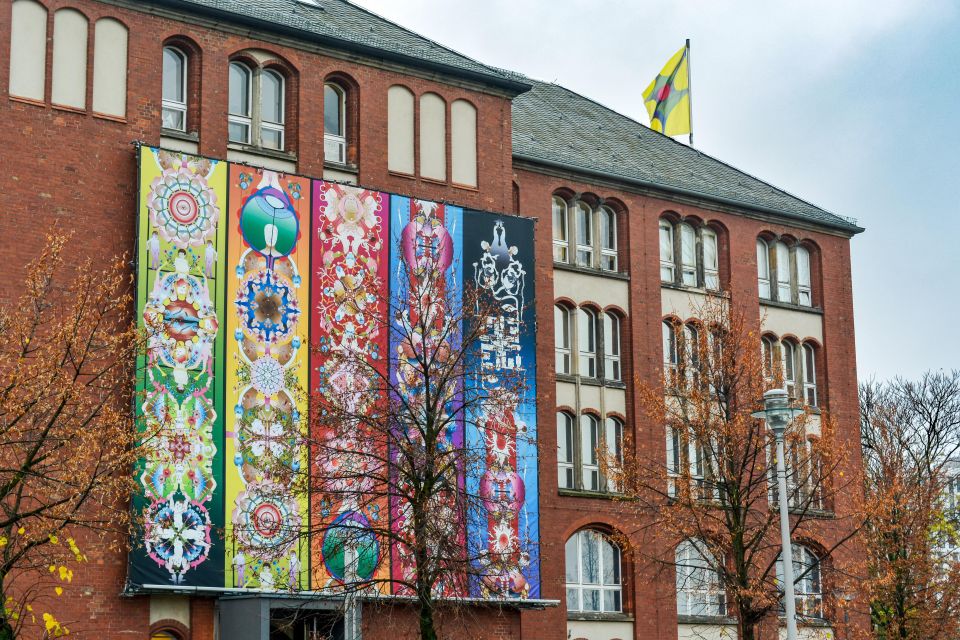
Are Pets Allowed on the Walking Tour?
Pets aren’t allowed on the walking tour, ensuring a smooth experience for all participants. Visitors appreciate the opportunity to focus on the rich history and insights without distractions from furry companions.
Is There a Minimum Age Requirement for Participants?
There’s no strict minimum age requirement for participants. However, the tour’s not recommended for children under 10 due to its historical content and complexity, making it more suitable for adults and older children.
Can I Take Photos During the Tour?
Visitors can take photos during the tour, but they should be mindful of the context and respect others’ privacy. Engaging with the historical surroundings enhances the experience while capturing memorable moments.
What Should I Wear for the Walking Tour?
For the walking tour, visitors should wear comfortable shoes and dress in layers. Weather can change, so a light jacket or umbrella might come in handy. Staying comfortable enhances their overall experience while exploring.
Are There Restroom Facilities Available During the Tour?
During the tour, participants can find restroom facilities nearby. The guides ensure everyone’s comfort and convenience, making breaks as needed. It’s always good to inquire about availability at the start for peace of mind.
Not for you? Here's more of our most recent tour reviews happening neaby
- Berlin: Quatsch Comedy Hot Shot Show Ticket
- Berlin: Underground Party Tour
- Berlin: Walking Tour of Prenzlauer Berg
- Queer Berlin Walking Tour
- Berlin: Guided Walking Tour in English
- From Berlin: Potsdam Half-Day Guided Tour
- From Berlin: Potsdam Half-Day Tour in Spanish
- Berlin: French Cathedral 360° Panorama & Crémant to Go
- Berlin: Hansaviertel The City of Tomorrow Guided Tour
- Berlin: 2.5-Hour Neighborhood Tour of Neukölln
- Berlin: 2-Hour Lake Oberhavel Cruise From Tegel
- From Berlin: Guided Sachsenhausen Concentration Camp Tour
- Berlin: The Feuerle Collection Meditation Experience
- Berlin and National Socialism. Group Tour in Spanish
- Berlin: Brewery Tour With Beer Tasting
Recap
The Charité Hospital History Walking Tour offers a unique glimpse into Berlin’s medical past, blending stunning architecture with fascinating stories of innovation and resilience. Participants leave with a deeper appreciation for the hospital’s historical significance and the influential figures who shaped its legacy. With engaging insights provided in both English and German, this tour is perfect for anyone looking to explore the intersection of medicine and history in one of the world’s most iconic cities. Don’t miss out!
